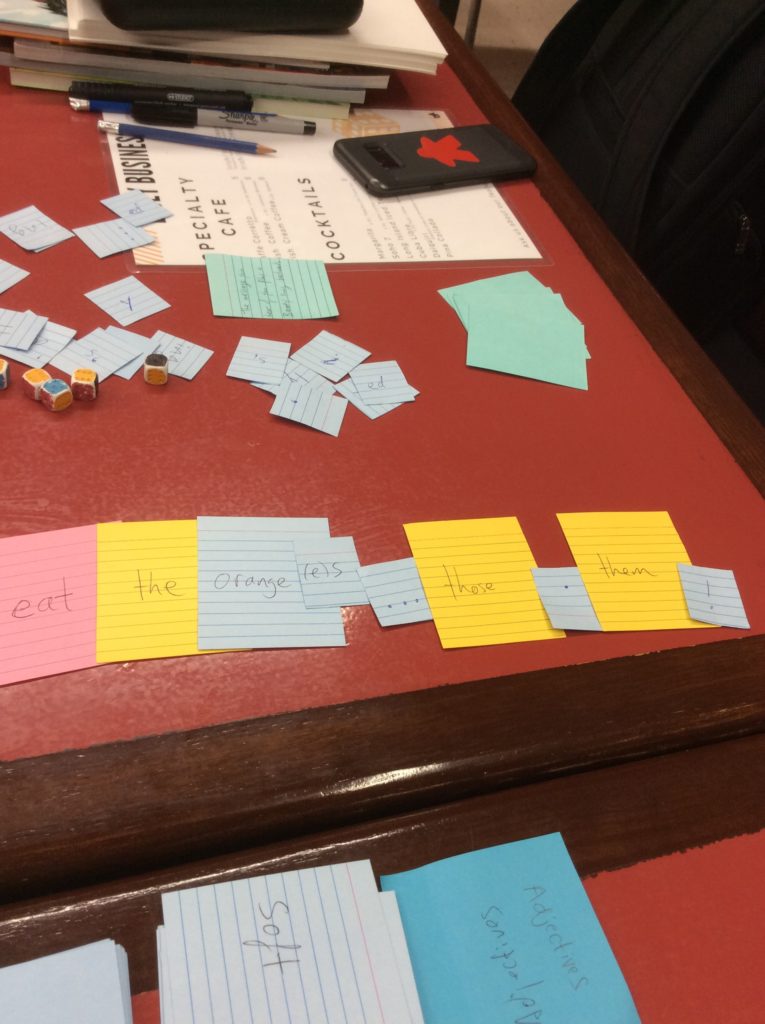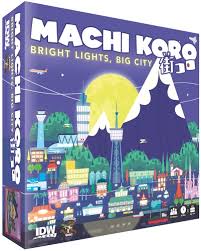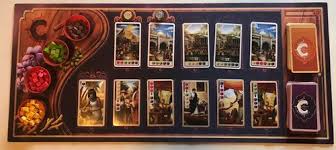The recipe for making a great game?
I was thinking back to the time that I was playtesting my friend Scott’s party game called “Say What Now?”, and we were remarking how it had elements of other games and activities, while still being just different enough.
It had the same mechanic as Cards Against Humanity and Apples to Apples, where all other players must select a card from their hand to give it to the judge for that round, who will decide on his or her favorite.
At the same time, his game had a similarity to fridge magnet poetry, where you’re moving around different words to create funny sentences and phrases.
But it also had some unique aspects, specifically where the judge doesn’t choose a scenario, rather the judge must make their own phrase based on the roll of the dice and the cards they draw.

This reminded me of something I overheard a student in Laurier’s Game Design and Development program once say. Echoing his professor, he said, “All good games are really one third the same as another game, one-third similar to another game, and one-third something completely unique.”
Now I wouldn’t say that this is the exact recipe you should be aiming to follow, or that these qualities are best used in equal parts, but it certainly is true that many good games contain something exactly the same and something similar to another game (or games), along with something that distinctive about them.
There definitely is a balance that needs to be maintained.
Leaning too much in one direction could be a recipe for disaster or at least a much less successful game.
If your game is too strongly the same as another game, why would someone choose your game over the original? I’ve heard this said about the game Carcassonne. Other tile-laying games have come along since that have not added very much to this gameplay. None of them have done overly well. There’s very little originality in them, so people gravitate to the original and very popular Carcassonne instead.
Being similar to another game can have its advantages, but being too similar can cause your game to be called a knockoff.
So, you may think that creating a really unique game would be the best route. But this may not be the case.
There’s something about familiarity that attracts people. They’re not necessarily looking for a game that’s just like another one they enjoy, but if there’s something reminiscent of another great game, this can actually help you quite a bit.
You see, if your game is a little too unique and out there, people may have a hard time relating to it and may find it either confusing or just a bit too weird. But, if you can say your game is like Pandemic, but faster paced and with a hidden traitor, this may appeal to people who enjoy Pandemic and are also intrigued by the twist you’ve thrown into it (or even those who feel that Pandemic was missing something – I know, how could they!?!?).
Let’s look at an example:
Machi Koro is the same as Monopoly in that you’re buying properties and can earn money from them. It’s similar to many other card-drafting games but is also unique in the way that you collect money from the bank and others, along with the powers of each of the properties.

Here’s another:
Century: Spice Road is the same as Splendor in terms of drafting cards and building an engine to gain point cards and it is similar to some deck-building games. However, it’s unique in the way you purchase cards and trade up your resources.

At first when I heard about Century: Spice Road, I thought it would be too similar to Splendor, a game I really liked at the time, but when I played it for the first time, the differences really stood out and I bought it about a week later. It has since replaced Splendor for me in many ways, as it adds to an already great idea (although I do still enjoy playing Splendor with others and using it as an introductory game).
So, as you can see, creating a game that contains something the same, something similar, and something unique can be very effective.
What’s a game that you love that really makes use of these aspects well?

4 comments
Scott Kelly
Hi Joe! Thanks for the mention! And in a useful article to boot. Very few of our ideas are totally original, and are usually inspired by something we’ve seen or played, but wanted to be a bit different, or possibly improved upon. And this does lead the the doubts sometimes, of whether we are making something new, or just copying or rehashing. It is important to focus on what makes a game different, in spite of using a familiar mechanic. And as players, to look for that difference, rather than dismissing a potentially fun and interesting games as being “just like (insert other game here)”.
Joe Slack
Hi Scott!
Great points. It’s definitely really helpful to have at least one thing that sets your game apart and makes it unique so that players don’t feel it’s just a copy of another game.
I can’t wait to see where “Say What Now” goes next!
John Molinari
I really enjoyed reading this article. I agree that some aspects of all games have shared qualities. Speaking of Carcassonne a very similar game is kingdomino. It shares the same tile laying mechanic and aesthetics. It is different due to the drafting and solo playspace.
Joe Slack
Thanks John! I appreciate it.
Great example! Yes, there definitely are some similarities between Carcassonne and Kingdomino, yet each has something unique that makes it a different experience and an enjoyable game unto itself.